2019-04-11 The Life of William Beamont.
On Thursday April 11th, 2029, the members and visitors were treated to a very well researched and enthralling account of William Beamont who did much good work in Warrington and became its first major after the borough was formed in its modern format.
The talk was given by local historian and author H Wells. (Harry Wells) from the accumulation of many years of research into the private diaries and information held by the archives from the donation of Beamont's papers to the Warrington Library and archives. He was a major instigator in forming the library which was the first in England supported out of the town rates.

William_Beamont_17971889_First_Mayor_of_Warrington_18471848_wiki-commons
Painter notes: Beaumont painting attributed to Thomas Francis Dicksee
Description: British painter Date of birth/death 13 December 1819 6 November 1895; Location of birth/death London London
Youth.
William Beamont was apprenticed as a lawyer and studied with firms in Cheshire and London before opening his own offices in central Warrington.
He gained a considerable reputation and was moderately wealthy, however his background and his internal thoughts reconciling the 'bad use of the law' by others and his ethics from his early enforced religious upbringing made him into a very powerful honest lawyer and he put his talents to use to benefit the people of Warrington. Like many men of his time he kept copious notes in his pocket books and journals which with other artefacts left to the Library and Archives allows us to get a more rounded picture of the man than any of his contemporaries.
His output as an author of historical affairs was very considerable and some are still on sale as 'e-books'.
During his life he had many doubts about his abilities and his capability to do good by his ethics and these thoughts are recorded in his journals. Mr Wells's talk have some slides with various quotations of Beamont's statements originally written only for Beamont's own eyes.
Additional material edited 20190426 Mr Harry Wells' talk.
We have been very kindly given a copy of the text of the talk given by Mr Wells, [Copyright of Mr H Wells], along with some of his slides.
The talk is reproduced below. The webmaster thanks Mr Wells greatly for the honour to reproduce the talk.
THE LIFE OF WILLIAM BEAMONT
William Beamont.
William Beamont’s name is well known in Warrington because of the schools which are named after him. He is also known as the first mayor of the borough of Warrington which was established in 1847, but he was also a prolific local history writer, traveller, and philanthropist.
Funeral.
Beamont’s funeral took place at Christ Church, Padgate, on Saturday 8 June 1889, attended by the Rector of Warrington, vicars and other clergy from most of the Warrington churches, the Principal of the Training College, the head teachers of numerous schools, representatives of the Conservative Party and those of other political persuasions, as well as the mayor, aldermen and burgesses of Warrington, magistrates, judges, solicitors, army officers, etc.
The epitaph on his gravestone reads: ‘Thro’ all this tract of years wearing the white flower of a blameless life. Blessed are the pure in heart. Blessed is he that soweth beside all waters’. The quotations are from the New Testament and from Tennyson’s ‘Idylls of the King’ and the words obviously parallel Letittia’s own feelings about her late husband and the qualities he showed, expressed in the language of the time.
At the funeral we see represented all the strands of Beamont’s life: his career in the law, his civic roles, local politics, the Church of England, and education. He would have considered his most important achievements to have been in the field of education. He built or took a leading role in the building of numerous schools, Orford chapel-school, St Ann’s schools, Heathside girls’ school, the Ladies school, Hamilton Street schools, and Woolston school. But probably what impresses us most from the funeral is that he was greatly respected across all sections of Warrington society.
But you and I have an advantage over his contemporaries: we can read his diaries and correspondence. We can see Beamont as he saw himself. The traditional image appears very different from the troubled character of the young man we come face to face with in his early diaries and correspondence.

By courtesy of Culture Warrington:
William Beamont photo (c) WarringtoWilliam Beamont photoWn Museum Art Gallery Culture Warrington DSC 0210
A Bridge Street boy.
Beamont’s parents William and Jane, were drapers, who lived at their shop in Bridge Street, Warrington.
The second of four children, he was born in 1797. The shop stood at the top of Bridge Street close to Market Gate but was demolished when the present Market Gate circus was created.
Schooldays.
From about the age of 7 he was sent to a boarding school in Chester run by a Mr Sigismund Stolterfoht, where he obtained the foundations of his knowledge of the classics. He then at the age of 14 was sent to Knutsford to begin his training in the law profession. At Knutsford he lived in Mrs Alcock’s lodging house in Silk Mill Street.
London.
In 1818 Beamont went to live in London to complete his training at the office of Wright and Cole in Serjeant’s Inn. In London he kept a detailed diary in the pages of which we meet a serious young man torn by conflict between on the one side what he perceives as the corrupt inclinations of his nature and the almost uncontrollable sensual appetites of the body, and on the other the diametrically opposed and unbending dictates of the Christian life.
His main failing, he identified as a natural disposition to indolence. His idleness then becomes a breeding ground for gluttony and the slavery of habit, and he identifies within his soul a whole catalogue of other related vices: anger, lack of charity, envy, hate, pride, vanity and sadism.
A social conscience,
But not all is negative introspection. In the London diaries we find the beginnings of Beamont’s social conscience. When he arrived in London, Beamont was confronted with the desperate poverty of the urban poor. For women in poverty there was the possibility of prostitution, and Beamont observed that they were not only on the streets: but the theatres were packed with them, as he was surprised to discover on a visit to Covent Garden, when he found the saloon adjoining the boxes ‘swarming with girls of the town and could not help wondering that such a use should be made of what was intended for other purposes’. The practice, he discovered, was for theatre managers to regularly distribute free tickets to the more attractive of the girls as their presence was thought an advantage to the theatre.
The law.
The young Beamont believed that the law should be the means of righting some of the wrongs of society. However, the absence of morality and justice in the law shocked him and caused him to examine his own intentions. He came close to abandoning his career, but in April 1819 resolved to continue and personally never to be involved in an unjust case, but to be an honest lawyer and ‘dare to be good’. Beamont returned to Warrington in March 1820 and set up as an attorney in a large old house by the Barley Mow in Warrington market place, where he continued to practise as a solicitor for nearly 50 years.
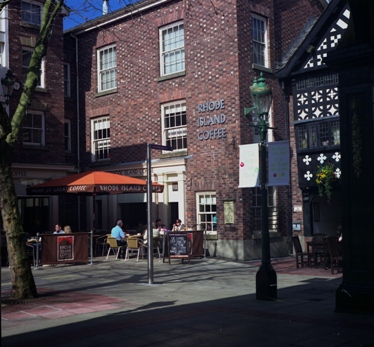
Beamont's offices now Rhode Island Coffee copyright H Wells AP12C11Su250312

The Beamont plaque (c) H Wells SE96A30Su110896 on wallo fhis former office.
Marriage.
Beamont was married at Warrington Parish Church, on 27 December 1825 to Ann Gaskell, the daughter of. John and Agnes Gaskell. Ann and William lived for virtually all of their married life in Bewsey Street, initially at what was then No. 2, at the Winwick Street end of the street. Just over two years after their marriage, at the age of 38, Ann gave birth to her first child, William John. He was educated at Eton and Cambridge and became the incumbent of St Michael’s church Cambridge. He published a grammar of the Arabic language and made trips to the Middle East where he preached to the people in Arabic and Hebrew. He died in 1868, aged 40. The Beamonts’ second child, John Gaskell, named after Ann’s father, died in 1831 at the age of nine months, probably from whooping cough.
It was probably in 1837, soon after his mother Jane’s death, that William and Ann removed to the old Beamont family home, No. 50, which was a spacious house, with a garden. The house now bears a plaque to a former inhabitant, Gilbert Wakefield, who was a tutor at the Warrington Academy
Behind the house there was a yard and a large garden, with apple and pear trees, dominated by an old malt kiln. Beamont sold the house in September 1843 as a vicarage for the local church. The Beamonts then moved into a larger house two doors away. There was a large garden, coach house and stables. Ann held a weekly reading and sewing class at the house. The clothes made there were then distributed to needy children in the class and also to those at Orford school.
The walled garden was Ann’s special province, where she could enjoy the peace and tranquillity she needed. She kept rabbits and hens there, and cultivated her plants in a greenhouse which was the envy of the neighbourhood. Friends would give her plants or cuttings which thrived under her care. Holidays provided a further opportunity to collect specimens.
Mayor.
As High Constable, Beamont had been involved in the administration of the Warrington township from 1829 until 1844, and had seen the flaws and evils of the old system. So it was that in 1846 he became one of the leading proponents of political reform, in a campaign which culminated in the town’s application to become a municipal borough. Beamont, in recognition of his leadership and the respect, in 1847 became the town’s first mayor.
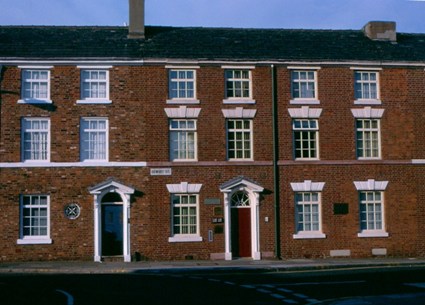
Beamont's house at No 65 formerly 50 Bewsey Street (c) H Wells SAU9815
Museum and Library.
During Beamont’s term as mayor a resolution was passed on 3 June 1848 to establish the first free museum and library ‘in the manufacturing districts’. Later, Beamont, as chairman of the Museum and Library Committee, proposed that a spacious new museum and library be erected which would be freely open to the public. In recognition of his role, Beamont himself was given the honour of laying the foundation stone. A long procession which included local dignitaries, religious leaders and schools wound through the town from the Market Place to Bold Street, where the mayor, Henry White, handed the ceremonial trowel to Beamont to the accompaniment of a resounding cheer.
Workhouse.
Beamont was a member of the board of Union guardians, so when large new workhouse was planned in 1849 he found himself appointed to the building committee. The old premises in Church Street and at Newton were found inadequate by an inspector who commented that the Warrington Workhouse was surrounded by ditches of stagnant water, breeding disease. Now a much larger, modern building erected on land near Whitecross was opened in 1851. Subsequently a workhouse infirmary was built, which eventually became the Borough General Hospital.
Rock Villas.
In 1859, the Beamonts left Bewsey Street to more rural surroundings, in the hope of achieving some improvement in Ann’s deteriorating health. Peter Rylands occupied their former house which had once been his family home. The Rylands family at that time, like other local industrialists, supporters of the Liberal party and, when Peter eventually left the house it became the Warrington Liberal Club. The front was reconstructed as a much grander club building which bears the date 1913. However, the rear portion of Beamont’s old house was retained and, remarkably, still survives. The large garden at the side became the club’s bowling green and it too may still be seen.
Ann was about to turn 70, but she had outlived nine of her siblings, with just her younger unmarried sister Mary left and must have felt she was approaching the final phase of her life. On Thursday 24 November, Ann may have sensed the end was approaching. Driven by her passion to save children from sin, probably connected with old feelings of personal guilt, she went to town in her phaeton to buy some religious tracts. As soon as she returned she began to distribute them to children in the neighbourhood. Ann finally came home to the house at Common Lane about seven o’ clock that evening, sat down, leant her head back and died without uttering a sound.
The funeral was held at Grappenhall where Ann was buried. There is no monument, not even a gravestone at Grappenhall, but in November 1860 a memorial east window was installed by public subscription in St Paul’s church, Bewsey Road, only a stone’s throw from their old house. The subject, the charity of Dorcas, chosen to mark Ann’s lifelong involvement with charity in the poorest districts of town and the figure of Dorcas was particularly appropriate in that she had for many years held a girls’ sewing class on Saturdays in their Bewsey Street home. The church was demolished in 1984.
Without Ann
Ann was an exceptional person who made a deep impression on all who met her. She was so influential in Beamont’s life that we may fairly divide it into three parts, before Ann, with Ann and after Ann. Marriage in 1825 had transformed the troubled young man we meet in his early diaries and Ann’s death would have an even greater effect, when the recognition of her faith and example transformed him into the great philanthropist and builder of church schools and churches which he then became.
Orford School.
Beamont’s first project was to rebuild the school at Orford. The work was undertaken in memory of his beloved wife Ann, who had recently died and who had been so committed to the school. A large memorial stone to that effect with the date 1860 was placed high in the south gable. He was surely right in believing a new school at Orford was what she would have most wanted and that would be the most fitting memorial to her. The building was demolished in 1987.
St Ann’s Church.
It was largely due to Beamont’s efforts that a new parish of St Ann’s was formed in 1864. Beamont gave the land for new church schools to be built, which were opened in the same year. He endowed the vicar in memory of his first wife. Indeed the church dedication itself, originally to have been to St Mark, was chosen in memory of Ann. William doubtless remembered that he himself once wrote to her
‘if I ever feel inclined to worship a saint I believe I shall choose St Ann’. The church is now a climbing centre.
The Town Misssion
Building new churches and schools were not Beamont’s only religious enterprise. There was something else which Ann would have supported just as strongly. She had spent her life bringing comfort, charity and religious teaching to the young and the poor. On the very day of her death she was distributing tracts to the children of the neighbourhood. Now, Beamont with the support of others set about promoting a Town Mission for Warrington. An important principle of the Mission was that it should be entirely non-denominational. Four mission agents were taken on, each with a portion of the town to cover. They would visit people at their own houses and read the Bible to them.
A Second Marriage.
Needed the companionship, care and day to day support of a wife, so, after an interval of three and a half years, he remarried, to a middle-aged acquaintance, Letitia Naegeli. Three years after the wedding, an opportunity presented itself which Beamont had probably half dreamt of since his youth: Orford Hall, the old seat of the Blackburnes, became vacant.
Retirement.
On 1 August 1866, Beamont took a seven-year lease of the hall from John Ireland Blackburne at an annual rent of £100. Included in the lease of the house were the garden, lanes and pleasure grounds and a coach house, stables, granary and other outbuildings. Beamont enjoyed a long and very productive retirement at Orford. His travelling exploits abroad were now over, but retirement simply meant a greater opportunity for commitment to public service as well as more time for research and writing. Sundays of course were wholly taken up with participation in church services and William’s Sunday School teaching. Weekdays were filled with a dizzying activity. Regular meetings connected with the many responsibilities Beamont had assumed took up much of his diary. There could easily be several meetings on the same day, all of which he would attend. Nor was he content to sit and listen; he always took a leading part in proceedings to ensure progress was made and was a willing volunteer to chair committees or serve on sub-committees.
The Beamonts’ social life can only be described as hectic, with frequent visits to stay with friends in London, Wales and elsewhere, and an unceasing round of social engagements and other local events. When they were at home, much of the day was taken up with callers.
Writing.
Considering Beamont’s social and public commitments, the extent of his personal antiquarian and literary activities is truly astonishing. He now, in his so-called retirement at Orford, became a regular weekly correspondent of the Warrington Guardian and from 1868 to 1884 made a significant contribution to the newspaper, virtually none of it under his own name. This was the period of his life which saw the prolific output of local history works, the greatest of his literary achievements being his monumental 3 volume Annals of the Lords of Warrington and Bewsey.
The last years.
In 1881 he remarked that up to then he had only suffered a few days’ illness from his childhood. However by 1884 things were becoming difficult. In January 1885 he realizes old age is upon him and complains ‘alas I begin to find my powers of body failing. My hearing is bad and my sight … worse. I am almost blind but I thank heaven whose mercy has spared me my faculties so long’.
By the beginning of 1888 his strength was rapidly diminishing and his commitments ceased one by one. The end occurred at Orford Hall at ten past twelve in the early morning of Thursday 6 June, 1889. It was said that he had caught a chill on a visit to the Guardian Office in Sankey Street which gave rise to a short illness of about six weeks.
H Wells, 16 April 2019
His Life as recorded in the National Archives.
Extract from National Archive and Livewire Warrington Library and Archive Service
This text contains public sector information licensed under the Open Government Licence v3.0.
Mayor and Antiquarian.
William Beamont (1797-1889) was, in his day, undoubtedly the most notable figure in the town of Warrington. A solicitor by profession, he was the first Mayor of the town, and actively involved in public affairs all his life. He was a great benefactor, sponsoring and endowing many local institutions and charities. He was also a keen antiquarian and historian.
He was born in Warrington, his father being an established linen draper in the town. His early education was at a dame school kept by a “Mrs Birch” (His nickname for the actual lady, our speaker named the lady), then at a boarding school in Chester conducted by a Mr Stolterforth. His chosen profession was the law: he was articled to a Mr Strethill Wright in Knutsford, completed his training in London, then came back to practise in the Market Place in Warrington, in premises subsequently occupied by Messrs Robert Davies & co.
He devoted a large part of his time to public affairs. He was instrumental in bringing about the incorporation of the town. In "Some remarks as to the Necessity for a Corporation, in a Letter addressed to the Inhabitants of Warrington" (1846) he set out arguments in support of this. A petition for a charter of incorporation went before the Privy Council and was granted in 1847. He was elected Mayor at the council's inaugural meeting. He sat on several committees, and in days when private money found its way into public concerns he spent a large sum of his own money to complete and connect sewers in the town. He was chairman of the Savings Bank, attended meetings of the Gas Board, worked hard for the Infirmary, to mention but a few other of his concerns. He also held the offices of High Constable and clerk to the magistrates.
Museum and Library.
He was the first chairman of the Museum and Library Committee in 1848. A circulating Library had been established in the town in 1760, maintained largely by private subscription. It became fully rate supported in 1848 - the first of its kind in the country - uniting with the museum of the local Natural History Society, which had been founded in 1835. This had been achieved through his efforts together with the first Town Clerk, John Fitchett Marsh. It was at first housed in rented premises in Friars Green. He laid the foundation stone of the present building in Museum Street in 1855. This was enlarged in 1876 by the addition of the Art Gallery. Although he resigned as an alderman in 1854, he remained (co-opted) as Chairman of the Museum and Library Committee until his death.
A devout Church of England churchman, he was renowned for his charitable deeds and unstinting financial generosity. His name is, in this context, linked with various educational establishments, including the Mechanics Institute, the School of Art, the Grammar School, Heathside Schools, St Ann's School and Orford Schools. He built and endowed St Ann's church, and endowed the parish of Orford. Here at Orford, in the combined school and church (used Monday to Saturday as a school and Sundays as a church and Sunday School) he attended services, read lessons and taught at the Sunday School until he was 90 years old. He campaigned to build a hospital to replace the Warrington Dispensary (opened in 1810) which had become inadequate for the needs of the town, setting up a fund and initiating a group to work to this end. The Infirmary was opened in 1872, with "Beamont Ward" a monument to his interest in the project.
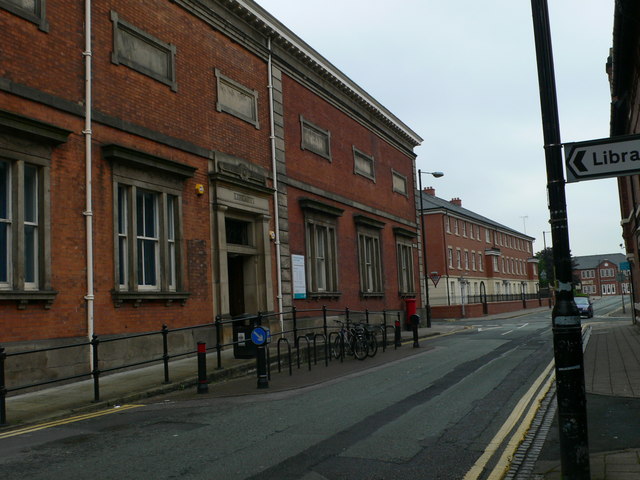
Eirian Evans / Warrington Library & Museum / CC BY-SA 2.0_Warrington_Library_and_Museum_-_geograph.org.uk_-_1304989.jpg
Education: "College of Art" under his auspices.
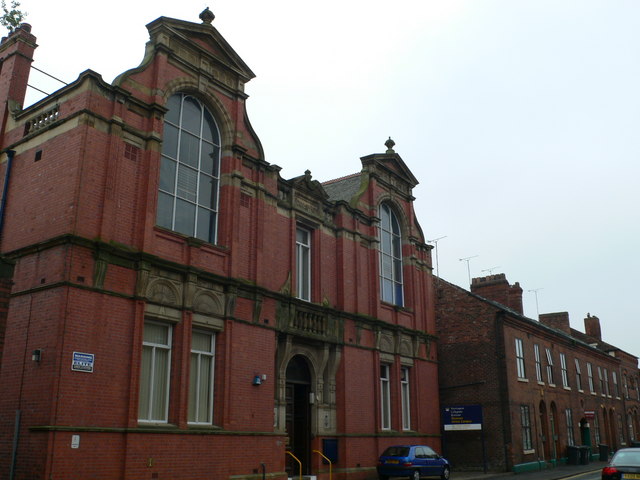
Warrington College of Art, by Eirian Evans, CC BY-SA 2.0, Warrington Collegiate Institute building - geograph.org.uk - 1304995.jpg
Historical research and publishing historical books and notes on his foreign trips.
He held a lifelong interest in antiquarian and historical research, especially after retirement from his professional work c1865. He had many works published, numbering some sixty or more books and pamphlets. These include histories of Warrington and the surrounding parishes and townships, books based on his foreign tours, and transcripts or abstracts of historical documents. His own copies of several of these, with notes, additions and pasted in news-cuttings etc., are preserved in the Library Reference Section. He left a large quantity of unpublished material, which forms the basis of the Beamont Collection. He was also a member and officer of various Lancashire and Cheshire learned societies, and a voluminous contributor to newspapers, especially the "Warrington Guardian".
Marriages.
His first wife was Ann Gaskell, the daughter of John Gaskell, a Warrington merchant. The authoress, Mrs Gaskell, was a distant relative. Ann Beamont was so active in charitable and church work herself that he claimed that in some parts of the town he was known as Mrs Beaumont's husband. She died in 1859. They had lived in the town in Bewsey Street, but after her death he moved to Rock Villas, Latchford.
His second wife was Laetitia Naegeli, who was of Swiss parentage. She too distinguished herself in the community by charitable deeds, and continued to do so after his death. She herself died in 1902, and the residue of her estate went to the "Beamont Charity" for "well conducted persons who have known better days". They had lived for most of their married life at Orford Hall, which they rented from the Ireland-Blackburne family.
Children.
Two children were born of the first marriage. One son, John, died in infancy in 1829. The other son, William John (1828-1868), was a clergyman and author. He was educated at the Warrington Grammar School, Eton, and Trinity College, Cambridge. He toured Egypt and Palestine as a young man, was ordained in 1854 and spent some time in Jerusalem where he was engaged in educating intending missionaries to Abyssinia, Sunday School work and in preaching both in English and Arabic. He was a chaplain to the camp hospitals of the British army before Sebastopol. He returned to England in 1855, became curate of St John's, Broad Street, Drury Lane, London, then in 1858 accepted the vicarage of St Michael's, Cambridge. He died, aged 40, in 1868, his death hastened by a fever caught in the east. He had many works published, was the founder of the Cambridge School of Art (1858) and Church Defence Association (1859). He was also the originator of the Church Congress (1861).
William John Beamont has a much bigger 'profile' in the reference books and websites than his father William Beamont.
https://en.wikipedia.org/wiki/William_John_Beamont
Pioneer of Local History.
William Beamont has been criticised, in his lifetime and after his death, over certain inaccuracies and shortcomings, but it needs to be remembered that as a local historian of his time he was in many ways a pioneer. No-one can doubt his industry and application. It has been questioned how a man who was so actively engaged in his own profession and in public life found time to write so many books. Albeit by then retired from the law, he once partly disclosed the secret when he said "I spend several hours before breakfast every morning on the work". He was then 80 years of age.
Thanks to speaker Mr H Wells.
Mr Wells's website and publications;
http://www.hwells.co.uk/
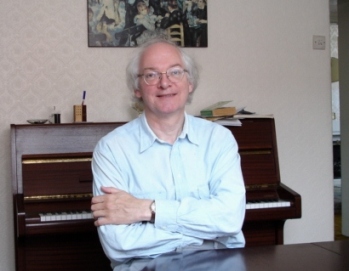
The members and visitors thank Mr Wells for his many years of research which gave us an interesting insite into our town's early formation.
His publications are available from his website or by contact to Mr Wells,
